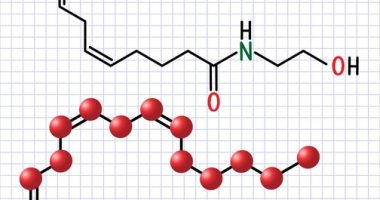In a groundbreaking study, researchers Xinxin Ke, Ajuan Liang, Chuanxia Chen, and Tao Hu have developed a novel method for the ultra-sensitive and highly specific detection of circular RNAs (circRNAs), which are crucial for potential applications in clinical diagnostics. Published under the title “A one-pot CRISPR-RCA strategy for ultrasensitive and specific detection of circRNA,” this research introduces an innovative one-pot method integrating the efficiency of CRISPR/Cas12a technology with reverse transcription-rolling circle amplification (RT-RCA). This combined approach, termed RETA-CRISPR, enables the amplification and detection of circRNAs, including those present in extremely low quantities, within 30 minutes to two hours.
CircRNAs are notoriously challenging to detect due to their low abundance and similarity to linear RNA isomers. Addressing these challenges, RETA-CRISPR leverages a two-step protocol that first amplifies circRNAs to generate distinct repeat units containing back-splicing junction (BSJ) sequences. In the second step, it employs the precise targeting ability of the Cas12a/crRNA complex to recognize these sequences, triggering Cas12a’s collateral cleavage activity, which generates a robust fluorescence signal indicative of the presence of circRNAs.
This method showcases an exceptional sensitivity with the capability to detect circRNAs at concentrations as low as 300 attomolar. Impressively, it has been successfully applied to identify a potential biomarker for hepatocellular carcinoma, hsa_circ_0001445, across various cell lines. This innovative technique heralds a significant advancement in the field of molecular diagnostics, representing a substantial leap forward in the CRISPR-based detection technologies.
The study conducted by Xinxin Ke, Ajuan Liang, Chuanxia Chen, and Tao Hu emerges against a backdrop of a rapidly evolving landscape in biomedical research where the detection and analysis of biomarkers play a pivotal role in disease diagnosis and therapeutic interventions. Circular RNAs (circRNAs), a novel class of non-coding RNAs, have gained significant attention due to their involvement in various biological processes and diseases including cancer, cardiovascular, and neurodegenerative disorders.
Historically, circRNAs were considered as mere byproducts of splicing errors in RNA processing; however, recent advances in high-throughput sequencing and bioinformatics have uncovered their complex roles and regulatory mechanisms. Distinguished by their covalently closed loop structures without a polyadenylated tail, circRNAs are resistant to exonucleases, which often leads to their high stability in cells and bodily fluids compared to linear RNAs. This stability, combined with their expression specificity across different tissues and development stages, underlines their potential as ideal biomarkers. Nevertheless, the precise detection and quantification of circRNAs remain challenging due to their low abundance and structural similarities with linear RNA isomers, complicating their differentiation using conventional RNA analysis techniques.
The current research paradigm is gradually shifting towards deploying more sensitive and specific methods for circRNA analysis. To date, standard techniques include northern blotting, real-time quantitative polymerase chain reaction (RT-qPCR), and next-generation sequencing. Although provide valuable insights, these methods harbor limitations concerning sensitivity, quantification precision, and high operational complexity requiring extensive sample preparation and lengthy processing times.
In response to these challenges, the integration of novel bioengineering tools such as CRISPR (Clustered Regularly Interspaced Short Palindromic Repeats) and enhanced nucleic acid amplification technologies has opened new avenues for biomarker detection. CRISPR technology, initially heralded for its revolutionary gene editing capabilities, has recently been adapted for diagnostics through the exploitation of its associated enzymes, such as Cas12a and Cas13, which exhibit collateral cleavage activity upon target recognition. This feature can be harnessed for signal amplification in diagnostic assays.
The introduction of the RETA-CRISPR method by Ke and colleagues leverages the sensitivity of reverse transcription-rolling circle amplification (RT-RCA) with the specificity of CRISPR/Cas12a technology. The RT-RCA process facilitates the amplification of circRNAs even at extremely low initial concentrations by converting them into amplified concatemeric DNA that bears repeating BSJ sequences unique to each circRNA. Subsequent activation of the Cas12a/crRNA complex upon recognizing these specific sequences initiates a collateral cleavage activity, leading to a cascade of cleaved reporter molecules and resulting in measurable fluorescence. This approach addresses both the quantification issues and the high background noise associated with traditional methods.
The development of the RETA-CRISPR technique represents a significant advance in circRNA research and diagnostic applications, offering a faster, highly sensitive, and selective diagnostic tool. Studies like these are foundational in the push towards personalized medicine, where circRNA profiles could potentially serve as precise biomarkers for various diseases, enhancing early detection and improving treatment outcomes.
The methodology employed by Xinxin Ke and colleagues to develop the RETA-CRISPR method for detecting circRNAs involved several crucial steps combining molecular biology techniques with bioengineering. The detailed process can be described as follows:
1. **Sample Preparation and RNA Extraction:**
The research began with the collection of various biological samples in which circRNAs were suspected to be relevant biomarkers. These included cellular extracts from different cell lines known to express the circRNA hsa_circ_0001445, which is potentially linked with hepatocellular carcinoma. Total RNA was extracted from these cells using standard RNA extraction protocols, ensuring that the integrity of the RNA was maintained during the process.
2. **Design and Synthesis of crRNA:**
Specific crRNAs (CRISPR RNA) targeting the unique back-splicing junction (BSJ) sequences of circRNAs were designed. These crRNAs guide the Cas12a enzyme to the specific site of the target circRNA. The design was based on the sequence data available from next-generation sequencing, and synthesized crRNAs were optimized for high specificity and minimal off-target effects.
3. **Reverse Transcription-Rolling Circle Amplification (RT-RCA):**
This step involved converting the extracted RNA to cDNA and subsequently amplifying the circRNA sequences using the rolling circle amplification technique. Primers specific to the BSJ sequence of the target circRNA facilitated the generation of long single-stranded DNA containing repeated units of the BSJ sequence. This amplification was critical, as it allowed even low-abundance circRNAs to be detected by increasing the number of target sequences in the sample.
4. **CRISPR/Cas12a Activation and Target Detection:**
The CRISPR/Cas12a complex was then introduced to the amplified products. The crRNA within this complex directed Cas12a to the specific BSJ sequences present in the amplified DNA. Upon finding its target, Cas12a was activated and began its collateral cleavage activity, indiscriminately cutting nearby single-stranded DNA reporter molecules that were labeled with a fluorescent tag.
5. **Fluorescence Detection:**
The cleavage of fluorescently labeled reporter molecules resulted in an increase in fluorescence signal proportional to the amount of circRNA target present in the samples. This fluorescence was measured using a standard fluorometer, providing quantitative data on the circRNA levels.
6. **Data Analysis and Validation:**
The results obtained from the fluorescence measurements were analyzed to quantify the circRNA levels. To ensure the specificity and reliability of the method, several controls, including samples without the target circRNA or with mutated BSJ sequences, were also tested. Additionally, the results were compared against traditional detection methods like RT-qPCR to validate the sensitivity and specificity claimed by the RETA-CRISPR technique.
Throughout the experiments, meticulous attention was given to the robustness of assay conditions—such as enzyme concentrations, reaction temperatures, and timing—to optimize the detection sensitivity and minimize potential backgrounds or false positives. This comprehensive methodology not only established the feasibility of the RETA-CRISPR method in detecting circRNAs precisely and sensitively but also set a benchmark for future diagnostic applications involving other low-abundance biomolecules.
The pivotal findings from the study by Xinxin Ke, Ajuan Liang, Chuanxia Chen, and Tao Hu delineate not only the efficacy of the RETA-CRISPR method but also its groundbreaking utility in clinical diagnostics. The researchers demonstrated the method’s ultra-high sensitivity with the capability to detect extremely low concentrations of circRNAs, down to 300 attomolar. This level of sensitivity surpasses traditional methods significantly, making it a powerful tool for biomarker discovery and disease diagnostics where early detection is crucial.
One of the key results highlighted in the study is the successful detection of the circRNA known as hsa_circ_0001445 in various cell lines associated with hepatocellular carcinoma (HCC). The RETA-CRISPR method was not only able to identify the presence of this circRNA but could also quantify its abundance across different stages of disease progression. The detection of hsa_circ_0001445, which was previously validated as a potential biomarker for HCC, underscores the method’s applicability in a real-world clinical setting, offering a non-invasive and efficient way to potentially screen and diagnose early-stage HCC.
Further validating the RETA-CRISPR approach, the researchers conducted comparative studies with existing RNA detection methods like RT-qPCR. The results clearly demonstrated superior sensitivity and specificity with RETA-CRISPR, leading to lower false positives and the ability to detect circRNAs in much smaller sample volumes. Additionally, the specificity of the method was accentuated by its success in distinguishing circRNAs from their linear counterparts and other closely related RNA molecules, which has been a significant challenge in the field.
Moreover, the versatility of the RETA-CRISPR platform was tested across a variety of biological samples including blood plasma and cell-free extracts, which further illustrated its robustness and potential for non-invasive diagnostic applications. This aspect of the research highlights its suitability for integration into routine clinical workflows, enabling a broader spectrum of applications from disease diagnosis to treatment monitoring and prognosis.
The ability of the RETA-CRISPR method to provide rapid results—within 30 minutes to two hours—also sets a new benchmark in the field. This time efficiency can be particularly pivotal in clinical settings where rapid decision-making is essential. For instance, in acute conditions or in operating rooms where quick diagnostics are needed to guide surgical decisions or therapy adjustments.
Importantly, the study not only presents a novel technological advancement but it also opens up new avenues for future research and development. The researchers suggest potential expansions of the RETA-CRISPR method to include multiplexing capabilities where multiple circRNAs can be detected simultaneously, further enhancing its utility in complex diagnostic scenarios like cancer, where multiple biomarkers need to be evaluated concurrently.
In conclusion, the study by Xinxin Ke and colleagues provides compelling evidence for the RETA-CRISPR method as a highly effective and reliable technological innovation for the detection and quantification of circRNAs. They have set a new standard in molecular diagnostics, paving the way for more personalized and effective healthcare solutions. With further development and validation, this technology holds the promise to revolutionize the landscape of disease diagnosis and biomarker discovery, translating into better clinical outcomes through earlier and more accurate detection methods.
As this innovative study opens new horizons in the field of molecular diagnostics, there is fertile ground for future exploration and enhancement of the RETA-CRISPR method. The success of this research suggests several promising directions that could further revolutionize the diagnostic landscape and bolster the utility of circRNA detection in clinical settings.
**Future Directions in RETA-CRISPR Development:**
1. **Multiplexing Capabilities:**
Future iterations of the RETA-CRISPR method could be designed to include multiplexing capabilities, allowing simultaneous detection and quantification of multiple circRNAs. This development would be particularly advantageous in complex diseases like cancer, where multiple biomarkers need to be assessed concurrently to provide a comprehensive diagnostic overview. Multiplexing would not only increase the throughput of the tests but also reduce costs and time.
2. **Integration with Portable Devices:**
There is an increasing demand for point-of-care diagnostic tools, especially in resource-limited settings. Developing portable, handheld devices based on the RETA-CRISPR technology could facilitate rapid, on-site diagnosis without the need for extensive laboratory infrastructure. This adaptation could dramatically improve access to crucial diagnostic tests in remote areas and enhance personalized patient care.
3. **Expansion to Other Diseases:**
While this study primarily demonstrated the detection of a biomarker for hepatocellular carcinoma, the RETA-CRISPR method holds potential for application in other diseases. Future research could focus on identifying and validating circRNAs as biomarkers for a diverse array of conditions, including cardiovascular and neurodegenerative diseases, thus broadening the impact of this technology.
4. **Enhanced Sensitivity and Specificity:**
Although RETA-CRISPR has shown remarkable sensitivity and specificity, ongoing research could explore ways to further enhance these attributes. Innovations might include the development of more refined crRNA molecules, improvements in enzyme efficiency, or the integration of additional molecular tools to reduce background noise and improve signal detection.
5. **Commercialization and Clinical Trials:**
To transition from bench to bedside, it will be essential to commercialize the RETA-CRISPR method through rigorous clinical trials and regulatory approvals. These steps will ensure that the method is safe, effective, and ready for integration into routine clinical use.
6. **Educational and Ethical Considerations:**
As with any new technology, there will be a need for education and training for medical professionals on the use and interpretation of RETA-CRISPR diagnostics. Additionally, ethical considerations, particularly regarding the management of highly sensitive genetic data, must be addressed to maintain patient trust and adhere to legal standards.
**Final Thoughts:**
The study by Xinxin Ke, Ajuan Liang, Chuanxia Chen, and Tao Hu marks a significant milestone in the field of circRNA research and molecular diagnostics. By amalgamating CRISPR technology with advanced amplification techniques, they have crafted a tool that enhances the precision, speed, and reliability of disease diagnostics. As this technology progresses, it could significantly influence personalized medicine, providing clinicians with exquisitely sensitive tools to detect diseases at their earliest stages and tailor treatments to individual patient profiles.
The RETA-CRISPR method represents a beacon of innovation in molecular diagnostics, one that promises not only to improve patient outcomes but also to transform the paradigms of diagnostic science. As we look toward the future, the ongoing development and implementation of this method will play a pivotal role in realizing the full potential of circRNA as a biomarker, forever altering the landscape of disease diagnosis and monitoring. This is the dawn of a new era in diagnostic capability, one which holds boundless possibilities for enhancing human health and longevity.









